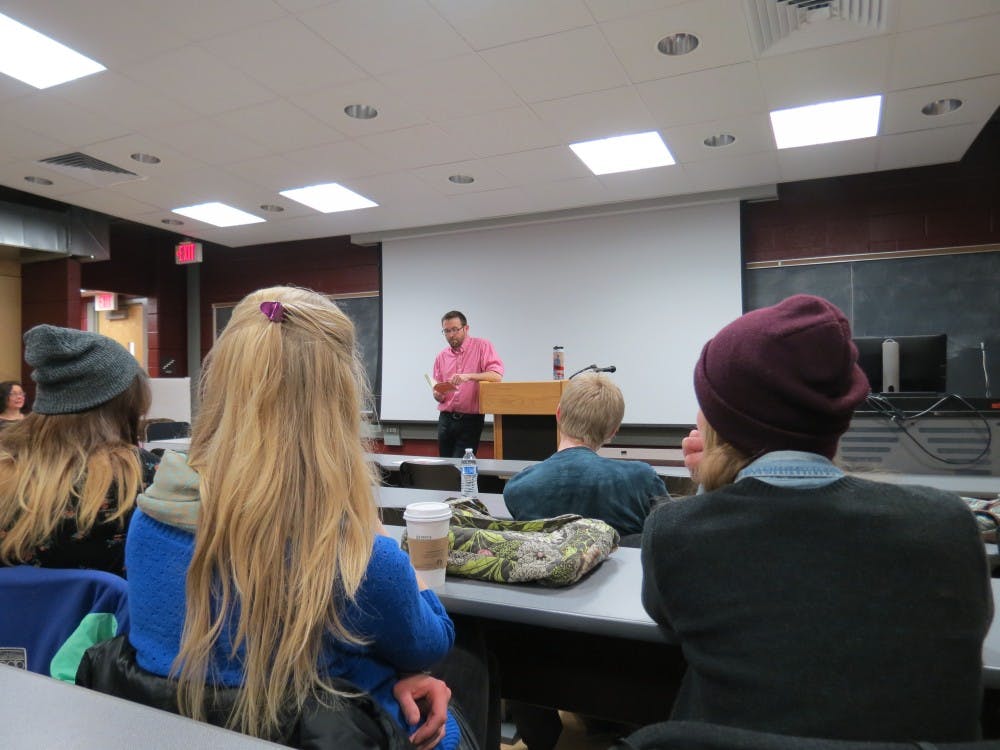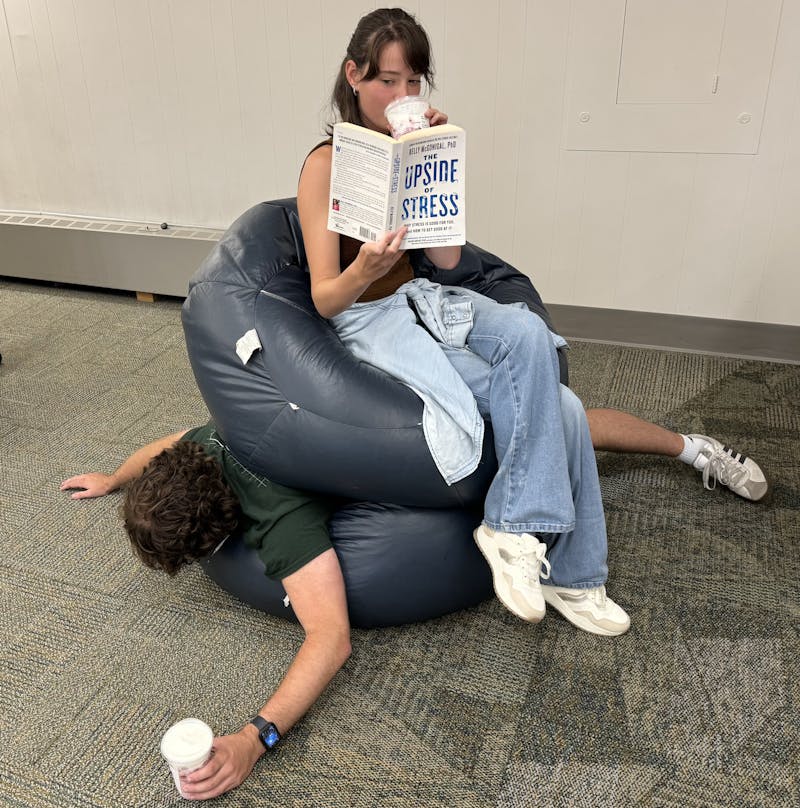With 11 other voices around the dinner table, it might have been easy for Neil Connelly to get lost amongst his nine older siblings had he not figured out how to get everyone’s attention.
When his dad turned to him every night and asked, “Hey boy, how was your day?”, Connelly said he knew he had to get that first sentence right. He would ponder that first sentence all day, trying to think of something that would capture the interests of his family so that he could tell his story.
“I always had the impression there was someone who wanted to listen to me,” Connelly said of being part of such a large family.
Now an assistant professor of English at Shippensburg University for the past five years and an author of six published books, Connelly is a master of enrapturing an audience.
Sitting in small auditorium in the Dauphin Humanities Center Thursday afternoon, I listened to the chit-chat buzzing through the warmly lit room as everyone waited for the excerpt from Connelly’s newest novel, “The Pocket Guide to Divorce.”
Much like his dinner table stories, he greeted the nearly filled lecture hall with a single sentence that turned everyone’s attention to him.
“Thank you all for coming, especially those here for extra credit,” Connelly said, making the whole room laugh.
As casually as he would in front of one of his classes, Connelly leaned against the podium, using an elbow as a prop and grinning without reserve. His smile was like a rip across his face with white teeth showing through a closely kept black beard, which started below his nose and enveloped the bottom of his face. If it were not for the beard, Connelly could be mistaken for a school boy at first glance with his mischievous grin and the tip of his tongue curiously peeking out of his mouth to touch the corner of his lip like a poker player’s tell.
“This is my goofy little book,” he said, holding a thinly bound flap in the air to introduce his reading. Only 120 pages, the novel actually developed from a much larger story that he had been writing and had been put on “life support” until he was ready to come back to it, he told me during an interview the day before.
When Connelly returned to his story, he said he found the only parts that came alive were the chapters of the book that Mitch, the main character was writing. So Connelly salvaged the 40 pages written by Mitch and expanded them into the novel it is now.
Connelly seamlessly disappeared as he read Mitch’s words and became a divorced man unsure how to proceed with the rest of his life. Laughter ping ponged as he read through the grocery list of not a single man, but a divorced man, who is another beast altogether, Mitch, his character, said.
During the interview, Connelly said he writes as the character, letting the story leave his control and go where the character wants.
“I produce my best work not knowing,” said Connelly, who never plans the plots of his stories but surrenders control to his characters. A story takes off when it feels like the character is writing.
The only reasons for a writer’s block, Connelly said during his reading, are when a writer does not care enough about the character or cares too much.
“You risk revealing something to others or worse you risk revealing something you didn’t know to yourself,” Connelly said.
As a professor, he expects the same kind of risk taking from his students.
Senior Tegan Rhode, an English major, said, “He encourages his students to take more risks with it.” By risks she means the fear of writing openly and putting your emotion on the page.
The comfortable, relaxed way Connelly treats his classroom made Rhode feel as if she was not in a classroom at all, but having a discussion in a coffee shop, she said. After Connelly’s class, Rhode said she felt she was able to open up and put more of her voice into her writing.
In Connelly’s classroom, students do not sit at desks lined up in rows, but crowd around tables formed in a long, misshapen oval. Connelly sits at one end with his splayed knees brushing the underside of the table and his long arms reaching over top.
“He really cares about the students’ work and about them as people,” said Professor Kim Van Alkemade, who works alongside Connelly in the English department.
Because Connelly takes students’ work so seriously, it sends a message to them that they should do the same, Alkemade said.
In class, Connelly gives his full attention to the student speaking, leaning forward on his desk with his mouth partly open in an eager half-smile, light glinting from his glasses as he nods along to what the student says.
Connelly is always able to pick out something good from a piece of writing and help the student to develop it into something better, said senior Mollie Fenby, a past student of Connelly’s who attended his reading.
The most memorable part of Connelly’s class was the way he used stories to teach the fundamentals of fiction writing, said senior Paul Deichmann, also a past student of Connelly’s.
“The art of telling stories is something that’s very natural to us,” Deichmann said, which is why it is easier for people to learn from stories.
Connelly uses stories from his personal life in his lectures, which Alkemade said she thinks is important since he is asking his students to provide that same kind of vulnerability.
His two sons, Owen and James, frequently work their way into Connelly’s classroom through his vivid anecdotes. He learns from his sons all the time, Connelly said.
He tries to get his students out of the academic brain that wants to analyze writing and into the mind of a child who experiences stories through raw emotion.
“Feeling is what makes a good story,” Connelly said. It is a lesson he teaches to his students: do not tell the story, but show it in a way that makes the reader experience something. “Art can change minds. It can change the world, but it does that through the heart.”




The Slate welcomes thoughtful discussion on all of our stories, but please keep comments civil and on-topic. Read our full guidelines here.